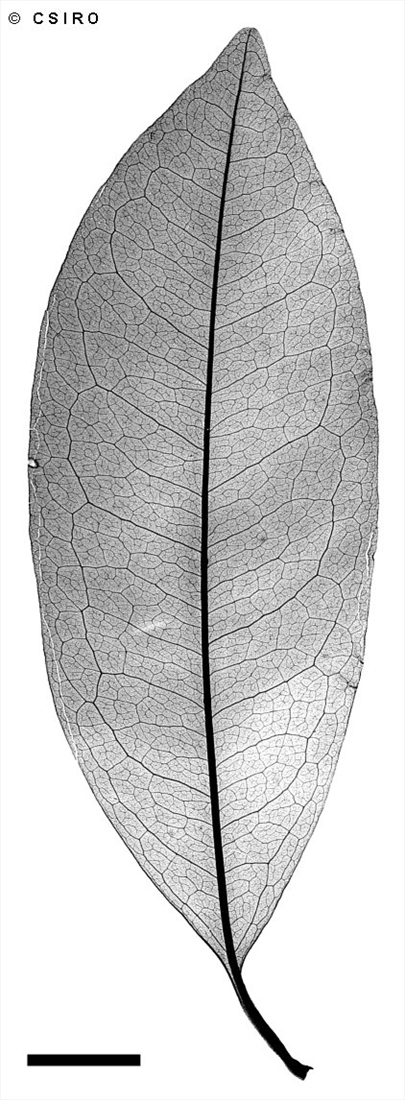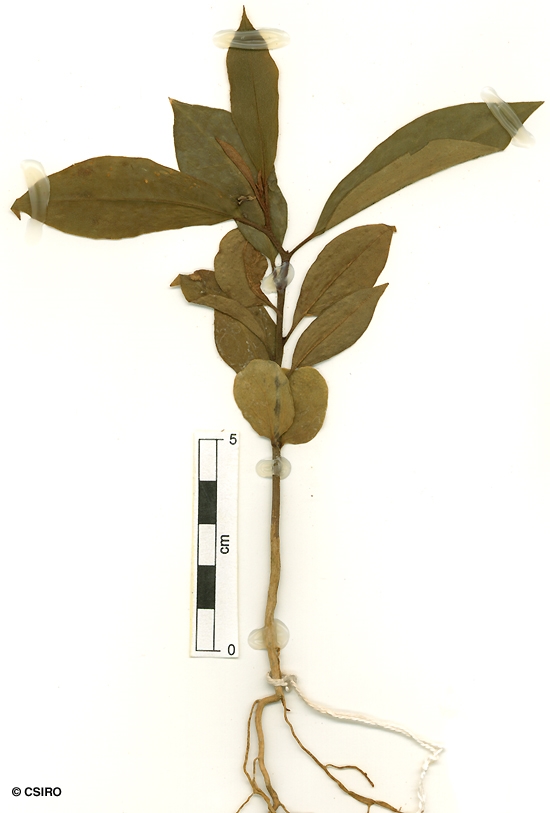Australian Tropical Rainforest Plants - Online edition
Galbulimima baccata F.M.Bailey





Bailey, F.M. (1894) Queensland Department of Agriculture and Stock. Botany Bulletin 9: 5. Type: Eumundi, E.H. Arundell.
Pigeonberry Ash; Ash, Northern Pigeonberry; Ash, Pigeonberry; Galbulimima; Magnolia; Northern Pigeonberry Ash
Outer bark generally cream to pale brown. Living bark extremely bitter when chewed. (This test should not be pursued too vigorously as the bark is poisonous.)
Numerous small brown circular scales visible with a lens on the underside of the leaf blade. Young shoots and twigs coppery. Leaf blades about 6-11 x 2.5-3.5 cm. Lateral veins forming loops inside the blade margin.
Flowers about 2-2.5 cm diam. with a strong unpleasant odour. Two concentric opercula present in young flower buds, but only one remains just prior to anthesis. Stamens not clearly differentiated into anther and filament. Anther connective extending well past the anther sacs as a linear appendage. Flower buds densely clothed in coppery brown lepidote scales.
Fruits +/- globular, about 15-25 mm diam. Seeds flattened.
Cotyledons oblong or obovate, scattered brown scales visible with a lens on the undersurface. At the tenth leaf stage: flat brown scales present on the upper and lower surfaces of the leaf blade; petioles, terminal bud and stem densely clothed in flat dark brown scales. Seed germination time 107 days.
This species is a rich source of alkaloids. A closely related species in New Guinea is used as a hallucinogenic. Pigeons feeding on fruits of the New Guinea species are reported to have sufficient levels of the hallucinogens in their flesh to produce a reaction in anyone dining on them. (Anon. Pers. com)
Fruit eaten by Cassowaries and Fruit Pigeons. Cooper & Cooper (1994).
Produces a useful decorative timber.
Wood specific gravity 0.64. Cause et al. (1989).





